#TheCrick
Link
#belmontcounty#FirstChoice#MarshallCounty#ohiocounty#Pleasanton#TheCrick#UncleSnook#UpperOhioValley#wheeling#YachtClub
0 notes
Text
COVID-19: Individual Symptoms and Severity Found to Be Be Not Useful For Self-Isolation Guidance in the Absence of Testing
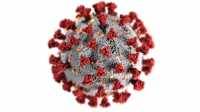
MedicalResearch.com Interview with:

Dr. Wall
Dr Emma Wall
Senior Clinical Research Fellow, UCLH-Crick Legacy study
Consultant Infectious Diseases UCLH
MedicalResearch.com: What is the background for this study?
Response: Since April 2022, both the UK and US have changed their COVID-19 isolation and testing policies. The impact these changes in the guidance and vaccination on community-acquired COVID-19 caused by recent SARS-CoV-2 variants of concern (VOC) has not been fully tested, including infections with BA.2. We aimed to characterise both symptoms and viral loads over the course of COVID-19 infection in otherwise-healthy, vaccinated, non-hospitalised adults, to assess whether current guidance remains justified. All participants were included in the UCLH-Crick Legacy study, a prospective, observational cohort study of otherwise healthy adults who have been taking part in regular workplace testing for SARS-CoV-2 in London
We sent swabs by same-day courier every other day to all adults who reported a positive PCR or lateral flow test to the study team up to day 10 after the start of each infection. We confirmed which variant caused the infection by PCR and sequencing. All participants completed linked symptom diaries.
We compared symptoms and changes in the amount of virus detected in the nose and throat during infection between study participants reporting COVID-19 caused by VOCs Delta and Omicron BA.1 and BA.2. We then analysed how many of our participants would meet current UK/US isolation guidelines.
MedicalResearch.com: What are the main findings?
Response: We found non-hospitalised, vaccinated adults infected with Omicron BA.1 and BA.2 most frequently reported symptoms of coryza (stuffy nose/cold-like symptoms), cough and fatigue. Compared to Delta infections, the earlier ‘classical triad’ of COVID-19 symptoms: fever, anosmia and shortness of breath were rare with Omicron, despite similar levels of virus in the nose and throat, self-reported infection severity and symptom duration across all infections. We found the highest levels of virus were found 3-5 days following symptom onset.
MedicalResearch.com: What should readers take away from your report?
Response: Our study suggests that less than 50% of adults with COVID-19 caused by Omicron BA. and BA.2 would current meet NHS/CDC isolation advice. Individual symptoms and their severity are not useful guidance for self-isolation in the absence of testing.
Healthcare policy makers need to keep vaccination strategies, national and workplace testing and isolation guidelines under review for each new variant that emerges.
No relevant COI/Disclosures
Citation:
Non-hospitalised, vaccinated adults with COVID-19 caused by Omicron BA.1 and BA.2 present with changing symptom profiles compared to those with Delta despite similar viral kinetics
Hermaleigh Townsley, Edward J Carr, Timothy W Russell, Lorin Adams, Harriet V Mears, Chris Bailey, James RM Black, Ashley S Fowler, Katalin Wilkinson, Matthew Hutchinson, Ruth Harvey, Bobbi Clayton, Gavin Kelly, Rupert Beale, Padmasayee Papineni, Tumena Corrah, Simon Caidan, Jerome Nicod, Steve Gamblin, George Kassiotis, Vincenzo Libri, Bryan Williams, Sonia Gandhi, Adam J Kucharski, Charles Swanton, Emma C Wall, David LV Bauer
medRxiv 2022.07.07.22277367; doi: https://doi.org/10.1101/2022.07.07.22277367
This article is a preprint and has not been peer-reviewed . It reports new medical research that has yet to be evaluated and so should not be used to guide clinical practice.
The information on MedicalResearch.com is provided for educational purposes only, and is in no way intended to diagnose, cure, or treat any medical or other condition. Always seek the advice of your physician or other qualified health and ask your doctor any questions you may have regarding a medical condition. Some links may be sponsored and no links are warranted or endorsed by MedicalResearch.com or its parent company, Eminent Domains Inc. In addition to all other limitations and disclaimers in this agreement, service provider and its third party providers disclaim any liability or loss in connection with the content provided on this website.
Read the full article
0 notes
Link
0 notes
Text
A new approach to building. Reflexive, adaptive, lived.
We readily accept that biology and nature exist in systems of feedback, evolution and adaptation, but we are less inclined to understand architecture in these terms despite its relationship to social organisation and culture. Walking around the Francis Crick institute, a biomedical research institution, I found myself wondering – what is the life of a building? And if we view architecture as a living system of feedback and response, what should that mean for the architectural design process?
Architects often create buildings in deterministic models, for them, the life of a building begins with a brief and ends with a completed structure. Whilst there is a consideration for user, with affordances (Gibson, 1979) built into the design, rarely does the feedback loop endure past the day that the user enters and the building becomes wholly his domain.
But architecture is living and it is adapted by the user: the plant pots that come to reside on desks, the posters that are stuck over windows to stop people looking in, and equally the building shapes the behaviour of the inhabitants there’s the kitchen that isn’t used because there’s not enough space in the fridge for your lunch, the chair cluster that everyone wants to congregate at because it has the perfect view over London; we generate habitus (Bourdieu, 1977) in our buildings, an embodied sense of ‘just what’ functions in architecture once we’ve had the opportunity to live in it.
As Alan Penn argues, we cannot separate structure and agent (building and user) in our analysis of architecture (Penn, 2008/9), and I would argue that analysis should persist beyond the completion of a building because this is when the life of a building really comes to be. If we accept that a building lives with its user, and that space and society are shaped concurrently, then we cannot expect to provide for every eventuality within the floor plan. Buildings need to be continuously evaluated and adapted with user for use.
The Francis Crick institute is exemplary of an architectural approach that maintains a feedback system between architecture, architect and user. Despite being highly specialised and strongly programmed, HO+K designed the buildings and imbued it with the capacity to adapt and be adapted.
“ Now we know how the building is used, there will be a second wave of building improvements that will fix that.”
The Francis Crick Institute can be summarised as, “[a] research centre without hierarchy or departmental divisions. A place with open doors for impromptu conversations and idea sharing. An environment where collaboration trumps competition and where the work of one researcher is intimately connected to that of her peers” (HO+K, 2019). This ethos is embedded in the infrastructure of the building and of its users, and the design reflects this philosophy. Having an adaptive design and an approach that encourages a continuous feedback between structure, agent and design has facilitated the goals of the institute to bring together outstanding scientists from all disciplines (Crick, 2019).
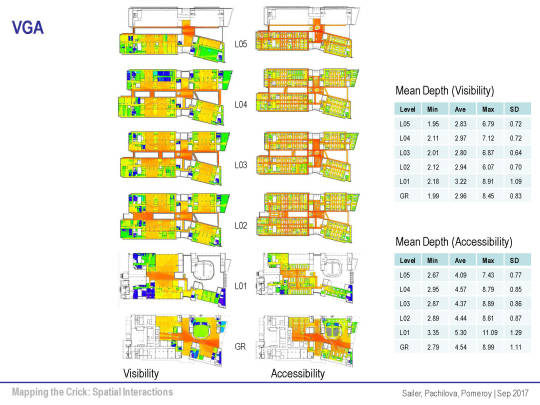
Fig 1. through space syntax analysis, we can see the strong visibility and accessibility in the building. (Salier and Pachilova, 2017)
This can seen through space syntax analysis, which demonstrates the strong visibility and accessibility in the building (Salier and Pachilova, 2017) but wondering around The Crick, it was clear that the ethos of the building was reflected in the lived experience, scientists held meetings in communal areas, there was a general buzz of activity and social events and open invitations were tacked to the wall. The building had a system of feedback, reflection and adaptation and it had a life of its own.
References
Bourdieu, Richard., Pierre Nice, and Nice, Richard. Outline of a Theory of Practice / Pierre Bourdieu ; Translated by Richard Nice. Cambridge: Cambridge UP, 1977. Print. Cambridge Studies in Social Anthropology ; No. 16.
Crick, 2019. Website. https://www.crick.ac.uk/about-us/our-vision
Gibson, James J. The Ecological Approach to Visual Perception / James J. Gibson. Boston, Mass. ; London: Houghton Mifflin, 1979. Print.
HO+K, 2019. Website quotation. https://www.hok.com/projects/view/the-francis-crick-institute/
Penn, A. 2008-2009. Podcast; Introduction to Adaptive Architecture and Computation – Video – lecture 5 Architecture and Architectural research.
Sailer, Kerstin; Pachilova, Rosica and Pomeroy, Ros (2017), ‘Mapping the Crick: Spatial Interactions’, presented at Workshop ‘Following the life of the Francis Crick Institute’, funded by Wellcome Trust, 4th September, London
0 notes
Photo
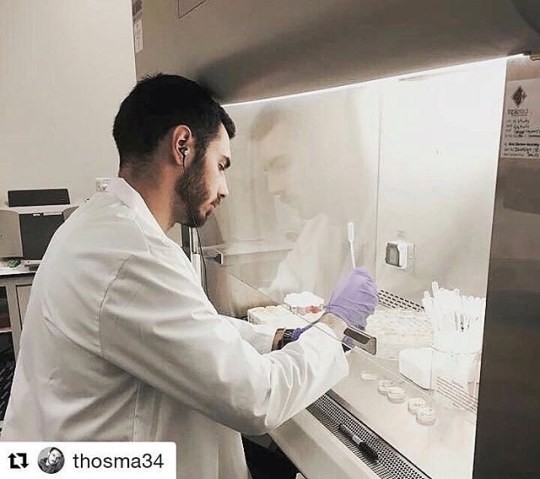
Reposting Crick scientist @thosma34 ・・ In this photo, you can see him conducting tests on cells to detect mycoplasma contamination. . . . Researchers need to constantly monitor the quality of cells used in their work to ensure that results have not been compromised by contamination. . . . #themoreyouknow #cellservices #science #research #laboratory #scientist #franciscrickinstitute #thecrick #london : @thefranciscrickinstitute
#themoreyouknow#science#scientist#laboratory#franciscrickinstitute#thecrick#research#london#cellservices
0 notes
Video
Adventurous Pepper always. #PepperFaceWiggleBottom #ILoveMyDog #PittyLove #PitBull #BlackLab #PitMix #PennypackPark #TheCrick #Video #PressPlay #Spring2017 (at Pennypack Park)
#ilovemydog#spring2017#thecrick#pitmix#video#pressplay#pittylove#blacklab#pitbull#pennypackpark#pepperfacewigglebottom
0 notes
Photo

Watch the short video on our website (link in bio and then scroll down to "read about what's new at Promega UK" where you will see the video Benchtop Automated Nucleic Acid Purification at The Francis Crick Institute) to see Dr Jayamalini Holding-Pillai and Dr Yan Tsou from @thefranciscrickinstitute describe their work and how the Maxwell RSC instrument is used for automating nucleic acid purification when authenticating cell lines. . . . . #labchat #labwork #scientists #nucleicacid #labwares #lablife #FrancisCrick #TheCrick #TheFrancisCrickInstitute #PhDChat #benchtopautomation #dnaextraction #dna #biologists #biology #science #PhDLife #laboratorywork https://ift.tt/304wdLb
0 notes
Text
Tweeted
.@TheCrick is the largest biomed lab in Europe, part of a thriving UK life sciences industry worth £63.5bn a year. http://pic.twitter.com/EGde3ZwBVD
— Philip Hammond (@PhilipHammondUK) October 25, 2017
0 notes
Text
Tweeted
A No-Deal Brexit is "absolutely not a realistic option" says former president of the Royal Society and CEO of the @TheCrick Sir Paul Nurse.
He warns British science isn't getting the "attention it needs" because of Brexit #r4today pic.twitter.com/pnGZ8PY1la
— BBC Radio 4 Today (@BBCr4today) June 3, 2019
0 notes
Text
Tweeted
We're recruiting for research assistants to join our super connectomics team in Cambridge. Our first crop of RAs have learned masses about brain circuits and data analysis, co-authored 2 published papers and 4 preprints and are starting PhDs @TheCrick and 2x @Cambridge_Uni! https://t.co/iazevkl5gG
— Greg Jefferis (@gsxej) October 15, 2018
0 notes
Link
via Twitter https://twitter.com/oneclipsesci
0 notes
Photo

RT @Labiotech_eu: State-of-the-art science - #bioart at it's best in 'Deconstructing patterns' at @TheCrick - catch it there until Dec 1st 2018! https://t.co/fHZu29F6Gk 2PLAN22 http://twitter.com/2PLAN22/status/962933871510740992
State-of-the-art science - #bioart at it's best in 'Deconstructing patterns' at @TheCrick - catch it there until Dec 1st 2018! https://t.co/fHZu29F6Gk
— Labiotech.eu (@Labiotech_eu) February 12, 2018
0 notes
Photo
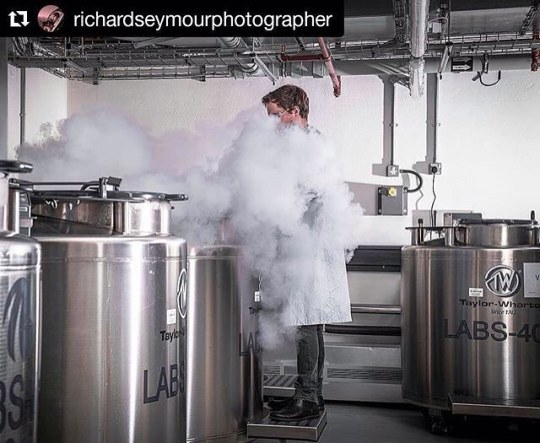
Reposting @richardseymourphotographer ・・・ This amazing image was taken in our freezer room, where we use liquid nitrogen tanks to store cryogenically preserved samples at -196 °C! . . . #thecrick #insidethecrick #freezer #stem #science #biomedical #research #liquidnitrogen #stateoftheart #london #stpancras #kingscross #scientists #laboratory #franciscrickinstitute : @thefranciscrickinstitute
#laboratory#scientists#liquidnitrogen#london#freezer#franciscrickinstitute#research#insidethecrick#stem#thecrick#stateoftheart#stpancras#kingscross#biomedical#science
0 notes
Photo

We are set up on Stand Number 11 for the NCRI Cancer Conference today until 5th November at the Scottish Event Campus, Glasgow organised by the National Cancer Research Institute Pop by to talk to us about Promega kits, reagents and instruments for cancer research. Also, later today in the Igloo, make sure you listen to Dr Soly Ismail from the The Francis Crick Institute presenting his work on using NanoBiT® in a biochemical assay format to investigate PPI inhibitors for cancer drug discovery - it promises to be a very interesting presentation. . . . #NCRI2019 #cancerresearch #oncologyresearch #reagents #assay #NCRI #CancerConference #NCRICancerConference #TheCrick #TheFrancisCrick #FrancisCrick #drugdiscovery #science #biology #LabChat #LabWork #PhDChat #LaboratoryWork #assays #NationalCancerResearchInstitute #NanoBiT #scientists #biologists #PPIinhibitors #cancerdrugdiscovery https://ift.tt/2JLmXVh
0 notes
Photo

Local truck from MD. #T800 #KenWorth #TriAxle #Dump #Truck #Green #Coal #WesternMD #MarpleTrucking #R&RTrucking #AESWarriorRun #PowerPlant #MtStorm #TheCrick #GeorgesCrick
#t800#marpletrucking#triaxle#dump#thecrick#powerplant#mtstorm#georgescrick#coal#kenworth#r#green#truck#westernmd#aeswarriorrun
0 notes
Photo

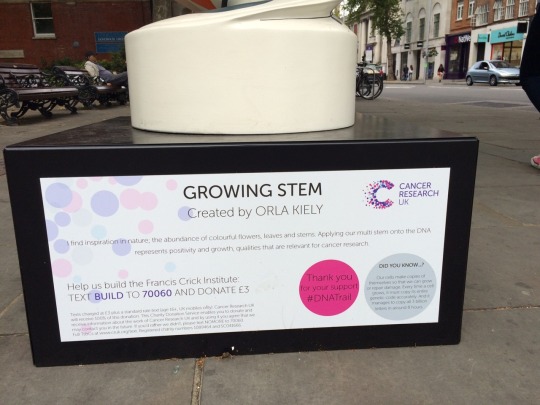
@PaulaJubilee: 2Day #DNAtrail in front of @orlakiely @CR_UK @TheCrick a positive moment to sit & see growth http://t.co/Ej7ooFEqUo http://t.co/929TRYFi9x
0 notes